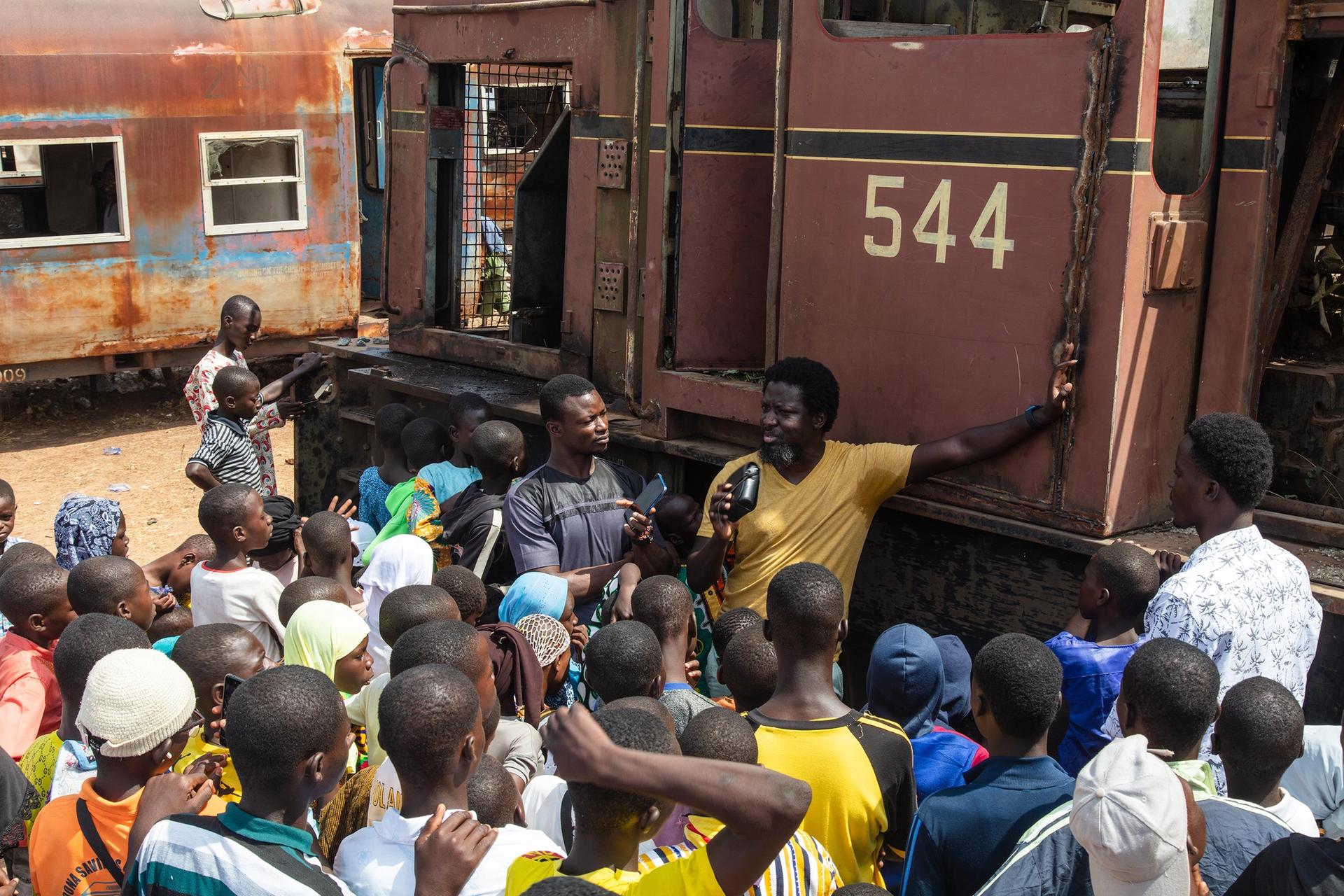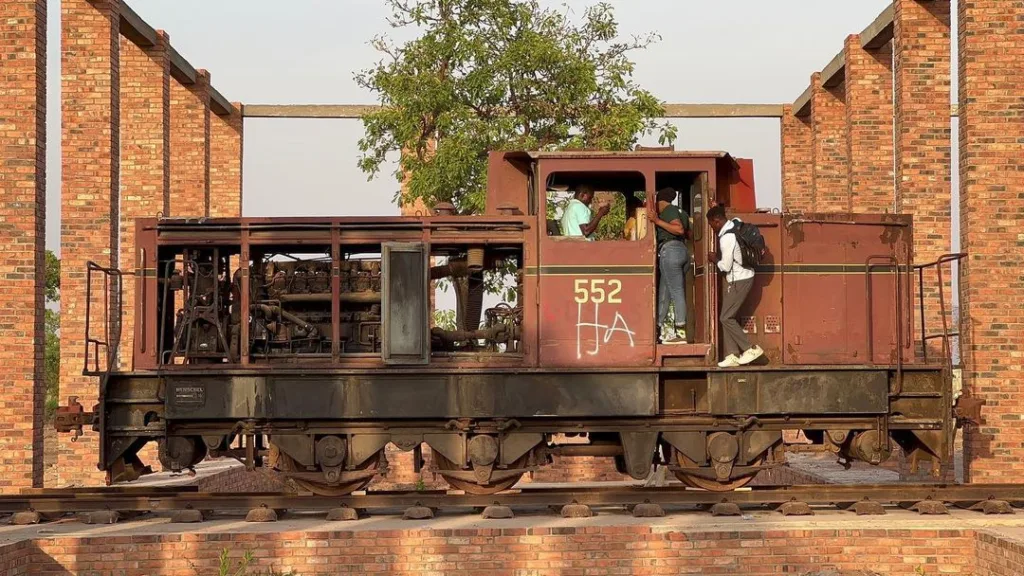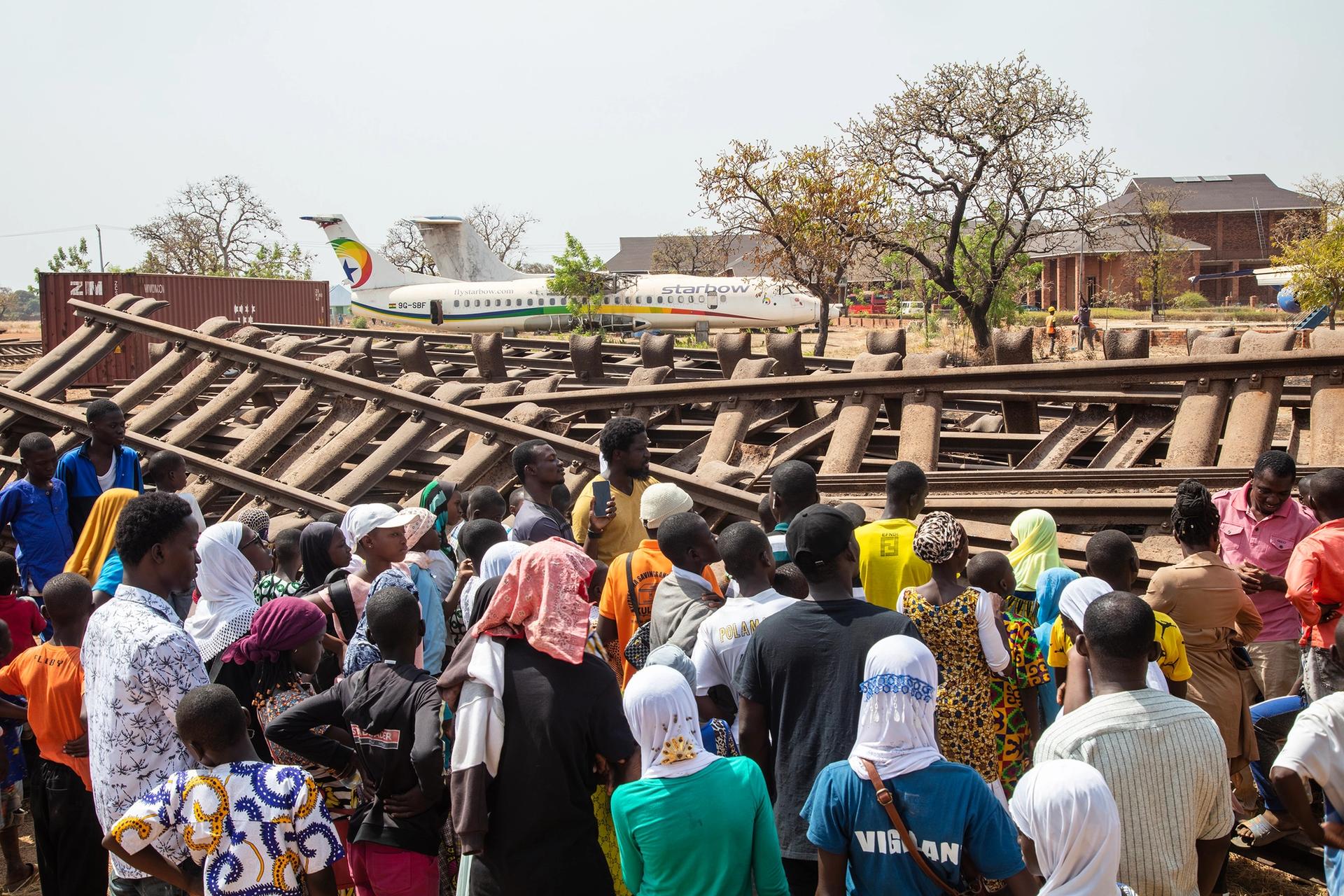Ibrahim Mahama, a well-known Ghanaian artist, has revealed that he has bought old Ghanaian trains and plans to repurpose them into beautiful and functional works of art. In a tweet, Mahama announced that the old trains dating back to the late 19th century were wasting away and will be transformed into something that will benefit the people of Northern Ghana.

Ibrahim Mahama was born in Tamale, Ghana in 1987. In 2010, he earned a BFA in Painting from Kwame Nkrumah University of Science and Technology in Kumasi, Ghana; and in 2013, earned an MFA in Painting and Sculpture from the same institution.
Mahama is perhaps best known for his large-scale works made from jute sacks. Made in Southeast Asia before being imported to Ghana, jute sacks are used in markets and to transport goods such as food, charcoal and coal.
To Mahama, the sacks represent a complex system of global exchange and a freedom of movement afforded to goods over people. Often, he works with collaborators to stitch tattered sacks together to create enormous patchwork quilts, which are draped over buildings including theatres, museums and apartments.
In 2015, Ibrahim Mahama gained international attention when he used jute sacks to encase public structures in Athens for documenta 14, and a long outdoor corridor in the Arsenale complex at the Venice Biennale.
One of Mahama’s exploits that boosted his image both locally and internationally was his purchase of some of Ghana’s old planes to create a museum and community space in Jenakpeng in the Northern Region. Now he is expanding his studio which will feature ancient trains.

The coaches, which were in used during the British colonial era, were the first carriages (albeit stationary) to be found in the northern region. They were hauled about 700 kilometres from southern Ghana to Tamale. The artist intends to convert them into studios, libraries, classrooms, sculptures, and spaces for artist residencies. The artist spent GHS350,000 (£24,000) on two of the carriages, according to the local news website GhanaWeb.
According to The Art Newspaper, Mahama says “I really like the idea that there are things which are completely abandoned and they look like they are obsolete, but when we somehow reconfigure them, we can allow them to become new spaces. It allows us to somehow go back into historical forms which we never even imagined existed.”
The artist, who is known for creating elaborate installations using items with a special importance to Ghana’s past and present, made unsuccessful attempts to acquire the trains for years. Then, in 2017, he went back to the concept in preparation for his Parliament of Ghosts exhibition, which will be held at the Whitworth Gallery in Manchester, UK, as part of the 2019 Manchester International Festival. The show took as its point of departure Ghana’s railway system, which was built under British colonial rule to aid in the extraction of natural resources. Confronting viewers with stark evidence of failed infrastructure and colonial inequality, Mahama brought into the gallery 120 scratched, plastic seats from second-class trains, as well as historical photographs and scraps of leather from first-class carriages. He had to make do with combining abandoned seats, cupboards, and archives from early 20th-century trains because he was unable to secure permission.
Some of the archives were brought to Tamale, where they served as inspiration for Red Clay Studio and the Savannah Centre for Contemporary Art (SCCA), a project and exhibition space administered by artists that also provides residencies.
Following this, he was connected with the Railways Development Ministry, which enabled a sale of the trains.

The studio already has six Soviet-era aircraft that are being utilized as classrooms for local kids, so this is not the first time Mahama has drawn inspiration from transportation.
The opening of a recently finished archaeological museum is the next item on Mahama’s agenda. He intends to have a retrospective there before converting it into a complete archaeological museum filled with returned artifacts.
About Ibrahim Mahama
In addition to the inclusion of his work at the Venice Biennale and in documenta14, the artist’s work has also been included in NIRIN, 22nd Biennale of Sydney, Tomorrow, there will be more of us, Stellenbosch Triennale, Cape Town (2020); Future Genealogies, Tales From The Equatorial Line, 6th Lubumbashi Biennale, Democratic Republic of the Congo.
Ibrahim Mahama’s solo shows include In-Between the World and Dreams, University of Michigan Museum of Art, USA (2020); Living Grains, Fondazione Giuliani, Rome (2019); Fracture, Tel Aviv Museum of Art, Tel Aviv (2016); Material Effects, Eli and Edythe Broad Art Museum, Michigan State University, Michigan, United States (2015); and Civil Occupation, Ellis King, Dublin (2014).


